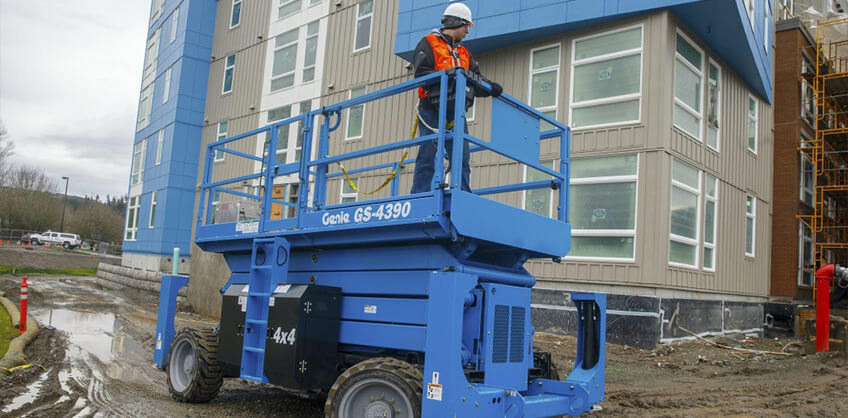Tire and Steering Options for MEWPs
by Sean Larin - Product Manager On Nov 14, 2019, 03:00 AM
Subscribe To Aerial Pros
Filter by tags
In order for your customers to get the maximum performance out of a mobile elevating work platform (MEWP), it is important that you consider what type of tire or track is best suited for their worksite environment and needs. This may be overlooked, but it is an essential consideration for MEWP.
When evaluating which MEWP best meets the needs of the jobsite, you should consider these questions:
- Where will you use the lift?
- What are the ground conditions?
Tire and Track Options
Non-marking Tires: Tires without the carbon black found in common tires. They leave no black marks on the floor and are standard on most industrial models. They’re most commonly made of hard rubber but are also available in pneumatic styles. Non-marking tires are good to use if marking is a concern in applications such as late-stage slab construction.
Foam-filled Tires: Pneumatic tires that are injected with a polyurethane-type substance that adds rigidity to the tires and prevents flats. These are required on some models to provide necessary stability. They are also good for environments with nails and other ground debris that tend to puncture tires.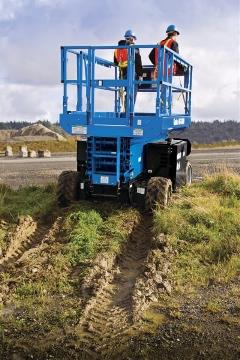
Air-filled Tires: Designed to increase a MEWP’s performance in sensitive ground conditions, such as sand and turf, air-filled tires are engineered to “float” on soft or delicate surfaces to protect softer surfaces during operation that could be damaged by the more aggressive tread on regular rough terrain tires.
Rough-terrain Tires: Tires with an aggressive tread design for improved rough-terrain capability. Standard on rough-terrain models. These tires are best for unimproved sites and muddy, wet ground conditions. Many rough-terrain tire options are available as non-marking versions for jobs that start as dirt and end as slab.
Independent Tracks: This 4-point track system provides extra traction when traveling over mud, sand, gravel and soft-soil conditions while also minimizing damage to grass. Independent tracks provide greater maneuverability when compared to traditional dual track systems.
Rough Terrain Options
Rough Terrain (RT) Model: Describes a unit designed to travel over unimproved construction site terrain. The “rough terrain” designation often includes the addition of lug tread tires and combinations of other features including patented active oscillating axles, engines with higher power ratings and two- or four-wheel drive.
Oscillating Axles: Axles that are designed to pivot in the middle to compensate for uneven terrain and keep all tires on the ground. Genie® active oscillating axles feature a patented automatic hydraulic adjustment system that maintains ground contact and a solid four-point stance, continually adjusting as the machine drives.
Full-time Positive Traction Drive: This option ensures that power reaches all drive wheels, even if one wheel loses traction in mud, snow or sand, helping machines to overcome uneven terrain.
Steering Options
Two-wheel Steering: A standard type of steering on most models in which the two front tires steer the machine.
Four-wheel Steering: A feature on some models in which all four wheels can be utilized to steer the machine, making it much more maneuverable in compact environments. On Genie equipment, the operator can often select from four steer options, including two-wheel front steer, two-wheel rear steer, crab steer or coordinated steer.
Coordinated or Oblique Steering: A four-wheel steering option on all Genie® GTH™ telehandlers and the Genie Z®-62/40, Z-80/60, ZX™-135/70, S®-40 XC™, S-45 XC, S-60 XC, S-60 HF, S-65 XC, S-65 HF, S-80 XC, S-80 HF, S-85 XC, S-85 HF, SX™-105 XC, SX-125 XC, SX-135 XC, SX-150 and SX-180 booms in which the front wheels turn in one direction and the rear wheels are coordinated to turn in the opposite direction, allowing the machine to turn around a sharp corner within a minimum amount of space.
Crab Steering: A four-wheel steering feature on all telehandlers and the Genie Z-80/60, ZX-135/70, SX-105 XC, SX-125 XC, SX-135 XC, SX-150 and SX-180 booms in which all four wheels turn in the same direction, allowing the machine to be driven diagonally for greater maneuverability.
Different worksite conditions and customer needs require different tire and steering options. When considering what tire is best fit for your customer it is important to consider where the lift will be used and what the ground conditions will be. Understanding these important features will allow you to make the best recommendations to your customers.
Related Posts
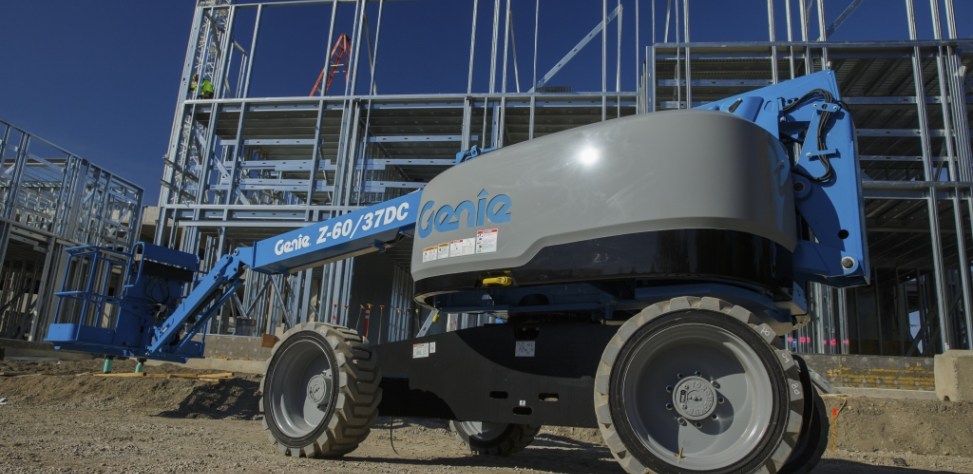
Buy OEM Tires for Your MEWP Fleet
Aftermarket parts may seem like a small part of your rental business, but they can have a big impact on your bottom line.
Continue Reading
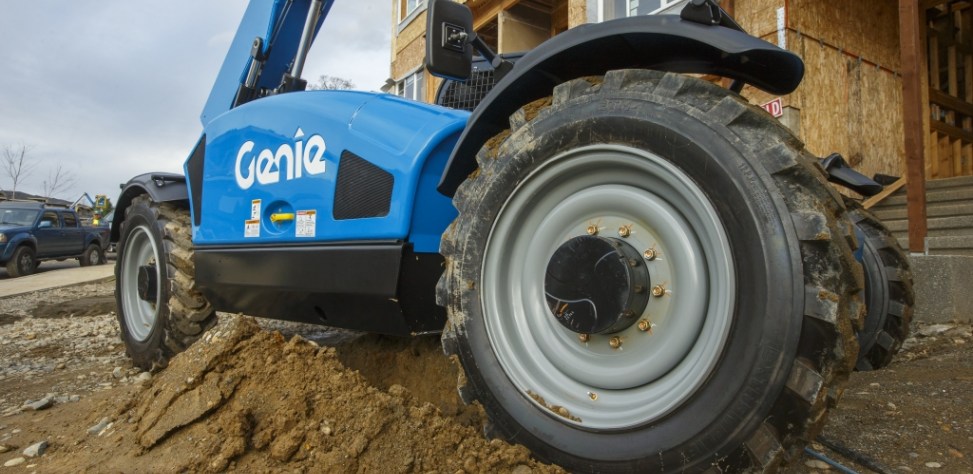
Selecting the Right Tires for your Telehandler
While tires are not likely the first thing you think about when spec’ing a telehandler, you should spend a few minutes thinking through your options to ensure you get the right type for the needs of your customers.
Continue Reading
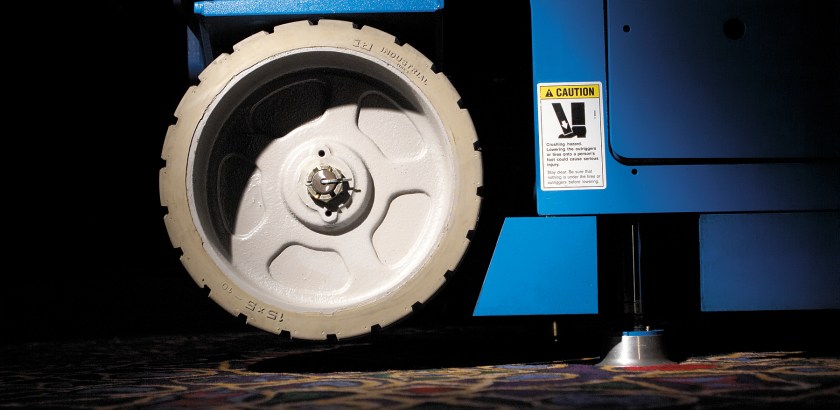
Tire Talk: Inspection and Replacement Tips for Aerial Work Platform Tires
A lot is riding on your aerial work platform (AWP) tires.
Continue Reading


